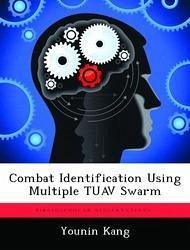In modern warfare, Tactical Unmanned Aerial Vehicles (TUAVs) are rapidly taking on a leading role in traditional and non-traditional ISR, to include Automatic Target Recognition (ATR). However, additional advancements in processors and sensors on TUAVs are still needed before they can be widely employed as a primary source for positive identification in the Combat Identification (CID) process. Cost is a driving factor for operating an ATR system using multiple TUAVs. The cost of high quality sensors appropriate for a single TUAV can be significantly higher than less sophisticated sensors suitable for deployment on a group, or swarm, of coordinated TUAVs. Employing two or more coordinated TUAVs with less complex sensors may lead to an equivalent or even better CID call than sending a single TUAV with more sophisticated sensors at a significantly higher cost. In addition, the coordinated TUAVs may be capable of reducing the time needed to correctly discriminate an object. Five measures of performance (accuracy, number of TUAVs shot down, TUAV preparation time, mean of decision time, mean of simulated mission time) from the simulation models are collected to compare the swarm system to the single TUAV system. Statistical comparisons are conducted using a paired t-test. The results illustrate improved performance of our swarm systems across most measures of performance.
Hinweis: Dieser Artikel kann nur an eine deutsche Lieferadresse ausgeliefert werden.
Hinweis: Dieser Artikel kann nur an eine deutsche Lieferadresse ausgeliefert werden.








